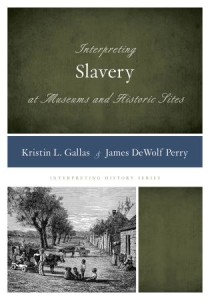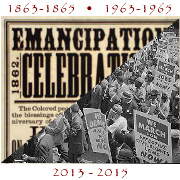Interpreting Slavery at Museums and Historic Sites
Interpreting Slavery at Museums and Historic Sites, edited by Kristin Gallas and James DeWolf Perry, is the most visible product to date of a three-year Tracing Center project to develop and disseminate best practices in slavery interpretation. This project has also included surveys of the field, workshops at historic sites and museums, conference presentations and instructional sessions, as well as additional publications.
“This seminal work … will make a significant impact.”
— Rex M. Ellis, Associate Director, Smithsonian National Museum of African American History and Culture
 The book is a collaboration with seven leading public historians with deep expertise in navigating the interpretation of slavery:
The book is a collaboration with seven leading public historians with deep expertise in navigating the interpretation of slavery:
- Dina A. Bailey, National Center for Civil and Human Rights
- Patricia Brooks, National Endowment for the Humanities
- Richard C. Cooper, National Underground Railroad Freedom Center
- Conny Graft, Conny C. Graft Research and Evaluation
- Linnea Grim, Monticello
- Katherine D. Kane, Harriet Beecher Stowe Center
- Nicole A. Moore, Museum Educator and Historic Consultant
Interpreting Slavery aims to move the field forward in its collective conversation about the interpretation of slavery—acknowledging criticism of the past and acting in the present to develop an inclusive interpretation of slavery. Presenting the history of slavery in a comprehensive and conscientious manner requires diligence and compassion—for the history itself, for those telling the story, and for those hearing the stories—but it’s a necessary part of our collective narrative about our past, present, and future.
Interpreting Slavery features best practices for:
- Interpreting slavery across the country and for diverse visitors. The history of slavery, while traditionally interpreted primarily on southern plantations, is increasingly recognized as relevant at historic sites of many kinds and across the nation. More than just an African-American and European-American story, it is relevant to the history of citizens of Latino, Caribbean, African and indigenous descent, as well, and to those descended from immigrants who arrived after slavery, whose stories are deeply intertwined with the legacy of slavery and its aftermath.
- Developing support within an institution for the interpretation of slavery. Many institutions are reticent to approach such a potentially volatile subject, so this book examines how proponents at several sites, including Monticello and Mount Vernon, were able to make a strong case to their stakeholders.
- Training interpreters in not only a depth of knowledge of the subject, but also the confidence to speak on this controversial issue in public and the compassion to handle such a sensitive historical issue and its contemporary resonances.
The book is intended primarily for professionals at all levels in the public history field, as well as students at the undergraduate and graduate levels in museum studies and public history programs. It will also be of interest to anyone teaching the history of slavery, either as an historical topic or in the context of exploring contemporary issues of race or privilege.
Early praise for the book
“Interpreting Slavery at Museums and Historic Sites is a comprehensive ‘how to’ manual. It can be extremely useful to any historical or cultural institution serious about improving its ability to present the topic of slavery in ways that acknowledge its foundational significance in the evolution of our nation.”
— Rex M. Ellis, Associate Director, Smithsonian National Museum of African American History and Culture
“Interpreting Slavery at Museums and Historic Sites provides museum professionals with a roadmap to help them engage the topic with greater confidence and vision. It is thoughtful and comprehensive. Well worth the read.”
— Christy Coleman, president of The American Civil War Center at Historic Tredegar in Richmond, Virginia
Contents of the book
Foreword by Rex M. Ellis
Preface
Chapter 1: Comprehensive Content and Contested Historical Narratives
Kristin L. Gallas and James DeWolf Perry
Chapter 2: The Role of Race and Racial Identity in Interpretation
Kristin L. Gallas and James DeWolf Perry
Chapter 3: “So Deep Dyed in Our Fabric, It Can Not Be Washed Out”: Developing Institutional Support for the Interpretation of Slavery
Linnea Grim
Chapter 4: Institutional Change at Northern Historic Sites: Telling Slavery’s Story in the Land of Abolition
Katherine D. Kane
Chapter 5: The Necessity of Community Involvement: Talking About Slavery in the 21st Century
Dina A. Bailey and Richard C. Cooper
Chapter 6: Visitors Are Ready, Are We?
Conny Graft
Chapter 7: Developing Competent and Confident Interpreters
Patricia Brooks
Chapter 8: Perceptions of Race and Identity and their Impact on Slavery’s Interpretation
Nicole A. Moore
Conclusion


